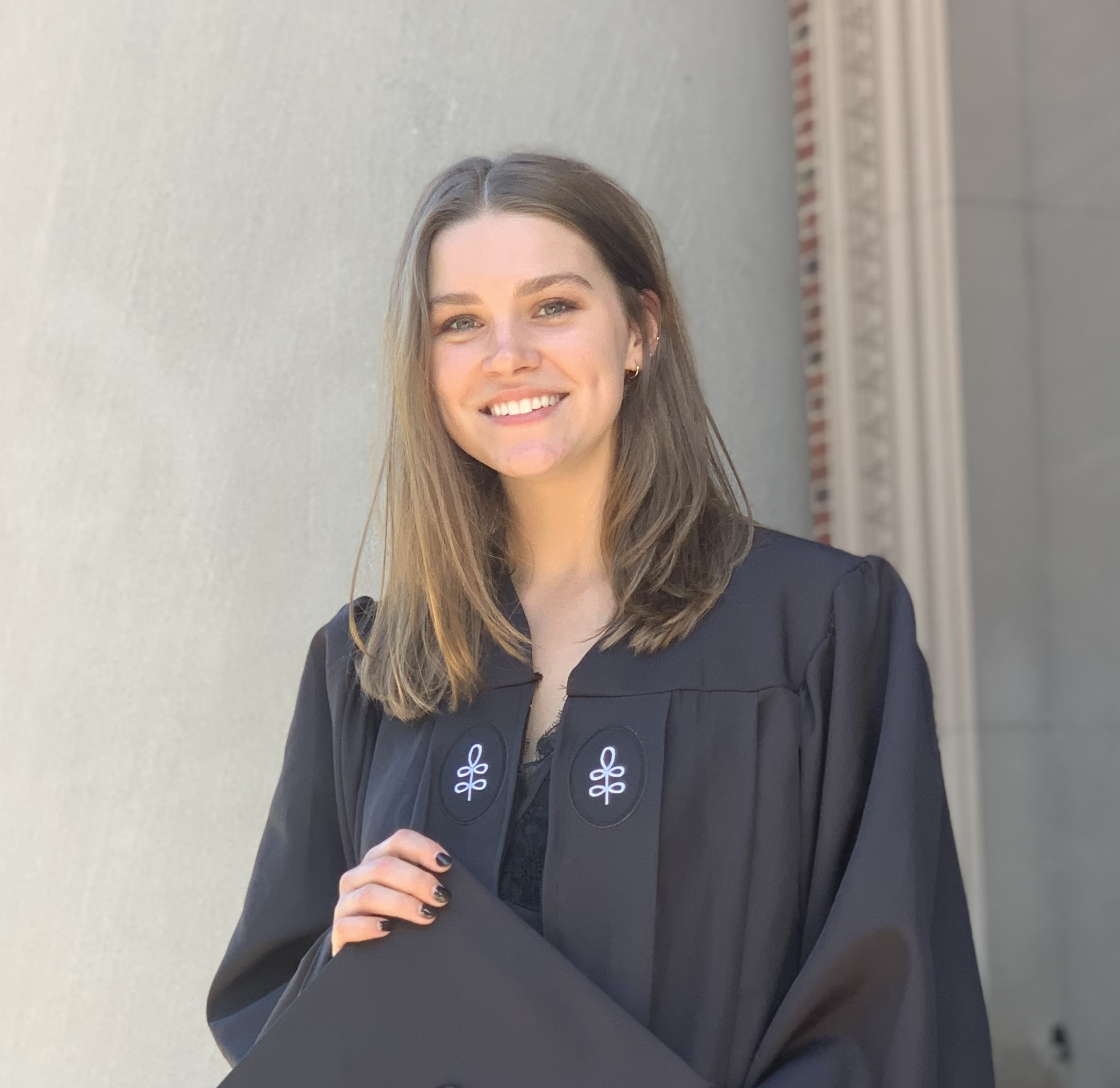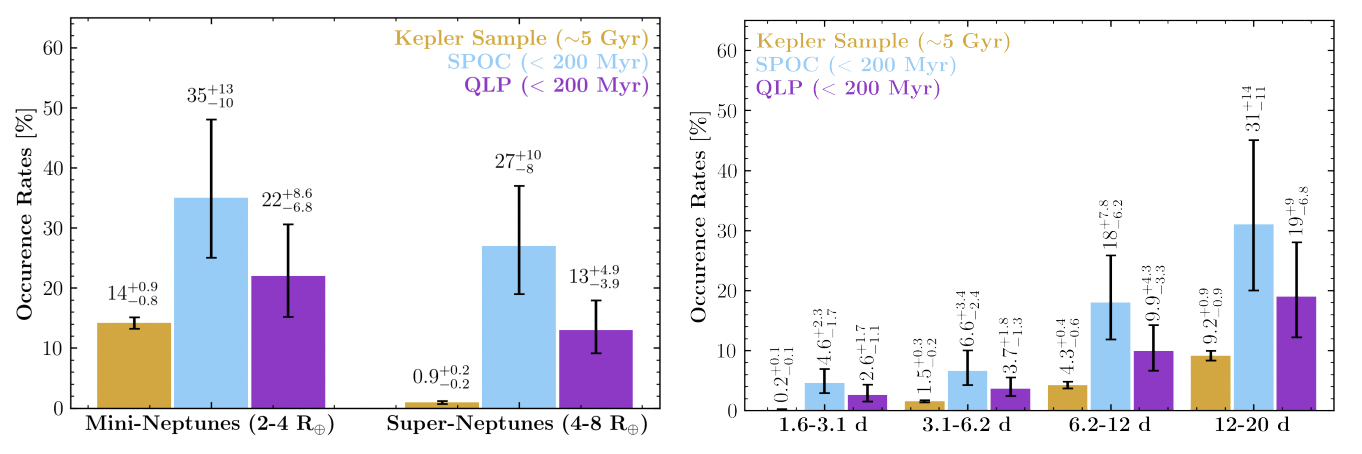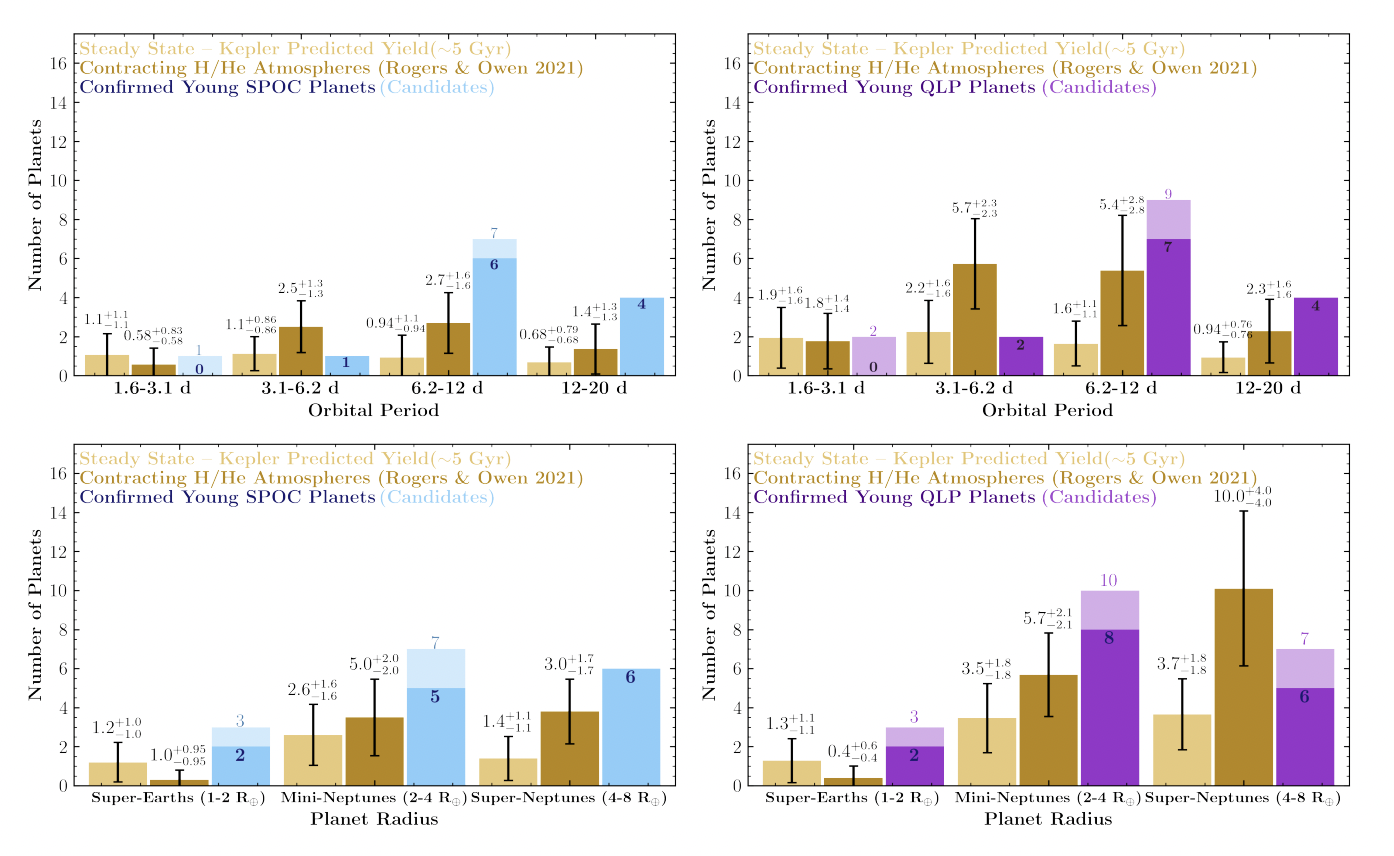About

Hello! My name is Sydney Vach (she/her), and I am a third-year PhD student working with George Zhou and Chlesea Huang at UniSQ in Australia, and Jens Kammerer and Bibiana Prinoth at the European Southern Observatory in Garching bei München, studying young(ish) planets and how they evolve within the first billion years of their lives. I completed my undergrad at Harvard University studying Physics and Astrophysics, working on the discovery and characterization of exoplanets with TESS. My PhD research primarily focuses on determining the occurrence rates of young planets with NASA's Transiting Exoplanet Survey Satellite (TESS). The goal of my work is to unveil the universal mechanisms that sculpt the demographics of the mature age exoplanet population, by investigating how the occurrence rates of planets evolve as a function of age.
When I am not doing research, you can almost always find me reading fantasy books, drinking some form of caffeine, trying to convince myself to believe I can become a runner, and adding way too many exclamation points to my emails!!! :)
Research
Occurrence Rates of Young Planets
We measured the occurrence rates of short-period (1.6-20 days), small (2-8 Rearth) planets located in comoving populations younger than 200 Myr in both the TESS FFIs and SPOC data,d to investigate the processes of planet
formation and evolution. There are currently many competing theories of planet formation and evolution, all of which can reproduce the mature distribution of planets we see in the Kepler sample.
However, these theories are most divergent within the first few hundreds of millions of years post-formation, which we can distinguish within the occurrence rates of this young population.

We calculate the occurrence rates as a function of planet radius and orbital period.
In the radius bins, we find an excess of super-Neptunes (4-8 Rearth) in the young planet population, measuring an occurrence rate of 27% in SPOC and 13% in QLP.
Kepler statistics find that super-Neptunes are rare at these short orbital periods (0.9%). As a function of orbital period,
we find a significant excess of planets at ~10 day orbital periods when compared to the Kepler distribution.

We independently verify our calculated occurrence rates through a forward modeling exercise.
Accounting for our survey sensitivity, we forward model the Kepler statistics to determine the
predicted number of planets our pipeline would recover if the Kepler statistics were true for the young planet population.
We find the same excess in both period and radius space as in our occurrence rates. This population represents the steady-state solution.
We synthesize a planet population consistent with in-situ formation undergoing atmospheric mass loss via photoevaporative escape,
and find that the young planet population is most consistent with a Hydrogen and Helium formation model.
Check our our paper on the arXiv (arXiv:2403.03261) and in the Astronomical Journal (Vach et al 2024 AJ 167 210)! If you'd like to read a version of this paper that is a bit easier to digest, below is a non-exoplanet astronomer friendly presentation of our work!
Publications
*updated 1 May 2025, please check NASA/ADS for the most up to date publication list.
First Author
- Vach, Sydney, Zhou, G., Mann, A.W., Barber, M.G., et al, A 16 Myr super-Neptune in Upper-Centaurus Lupus and a preliminary survey of transiting planets in Sco-Cen with TESS (2025), submitted to AJ
- Vach, Sydney, Zhou, G., Huang, C.X., Mann, A.W., et al, A transiting multiplanet system in the 61 Myr old association Theia 116 (2025), MNRAS, 540, 806V
- Vach, Sydney, Zhou, G., Huang, C.X., Rogers, J.G., et al, The occurrence of small, short-period planets younger than 200 Myr with TESS (2024), AJ, 167, 210
- Vach, Sydney, Quinn, S.N., Vanderburg, A., et al, TOI-712: A System of Adolescent Mini-Neptunes Extending to the Habitable Zone (2022), AJ, 164, 71
Co-Author
- Clark, J.T., Addison, B.C., Okumura, J., Vach, Sydney, et al, Spinning up a Daze: TESS uncovers a hot Jupiter orbiting the rapid rotator TOI-778 (2023), AJ, 165, 207.
- Rodriguez, J.E., Quinn, S.N., et al., including Vach, Sydney, TESS delivers five new hot giant planets orbiting bright stars from the Full Frame Images (2021), AJ, 161, 194
CV
*Last updated 29 Feb 2024.
Sydney Vach
sydney.vach@unisq.edu.au
EDUCATION
PhD in Astronomy
University of Southern Queensland, Queensland, Australia (Expected 2026)
Thesis: Investigating the timescales of planetary evolution.
Advisors: Dr. George Zhou (UniSQ), Dr. Chelsea X. Huang (UniSQ), Dr. Samuel N. Quinn (Harvard & Smithsonian)
European Southern Observatory, Garching bei München, Germany (Studentship)
Advisors: Dr. Jens Kammerer, Dr. Antoine Mérand, Dr. Bibiana Prinoth
A.B. in Astrophysics and Physics with honors
Harvard University, Cambridge, MA, USA (May 2022)
Thesis: How did it come to this? Investigating the adolescent mini-Neptunes orbiting TOI-712.
Advisors: Dr. Samuel N. Quinn (Harvard & Smithsonian)
Elements
Text
This is bold and this is strong. This is italic and this is emphasized.
This is superscript text and this is subscript text.
This is underlined and this is code: for (;;) { ... }. Finally, this is a link.
Heading Level 2
Heading Level 3
Heading Level 4
Heading Level 5
Heading Level 6
Blockquote
Fringilla nisl. Donec accumsan interdum nisi, quis tincidunt felis sagittis eget tempus euismod. Vestibulum ante ipsum primis in faucibus vestibulum. Blandit adipiscing eu felis iaculis volutpat ac adipiscing accumsan faucibus. Vestibulum ante ipsum primis in faucibus lorem ipsum dolor sit amet nullam adipiscing eu felis.
Preformatted
i = 0;
while (!deck.isInOrder()) {
print 'Iteration ' + i;
deck.shuffle();
i++;
}
print 'It took ' + i + ' iterations to sort the deck.';
Lists
Unordered
- Dolor pulvinar etiam.
- Sagittis adipiscing.
- Felis enim feugiat.
Alternate
- Dolor pulvinar etiam.
- Sagittis adipiscing.
- Felis enim feugiat.
Ordered
- Dolor pulvinar etiam.
- Etiam vel felis viverra.
- Felis enim feugiat.
- Dolor pulvinar etiam.
- Etiam vel felis lorem.
- Felis enim et feugiat.
Icons
Actions
Table
Default
| Name |
Description |
Price |
| Item One |
Ante turpis integer aliquet porttitor. |
29.99 |
| Item Two |
Vis ac commodo adipiscing arcu aliquet. |
19.99 |
| Item Three |
Morbi faucibus arcu accumsan lorem. |
29.99 |
| Item Four |
Vitae integer tempus condimentum. |
19.99 |
| Item Five |
Ante turpis integer aliquet porttitor. |
29.99 |
|
100.00 |
Alternate
| Name |
Description |
Price |
| Item One |
Ante turpis integer aliquet porttitor. |
29.99 |
| Item Two |
Vis ac commodo adipiscing arcu aliquet. |
19.99 |
| Item Three |
Morbi faucibus arcu accumsan lorem. |
29.99 |
| Item Four |
Vitae integer tempus condimentum. |
19.99 |
| Item Five |
Ante turpis integer aliquet porttitor. |
29.99 |
|
100.00 |


